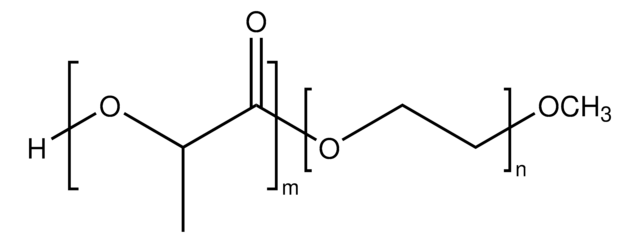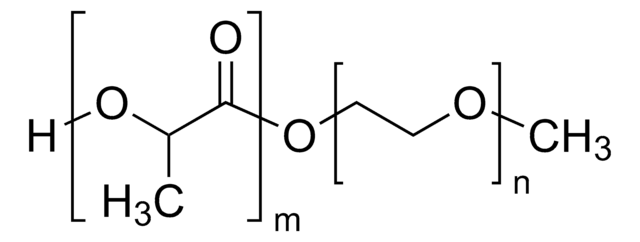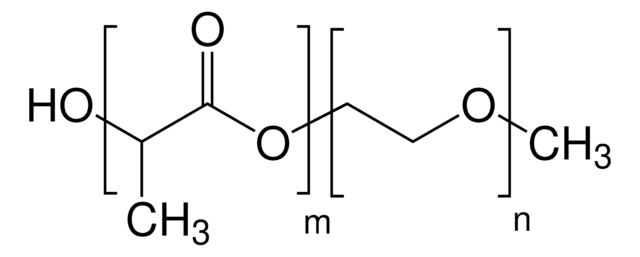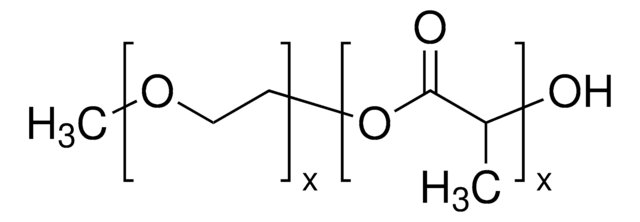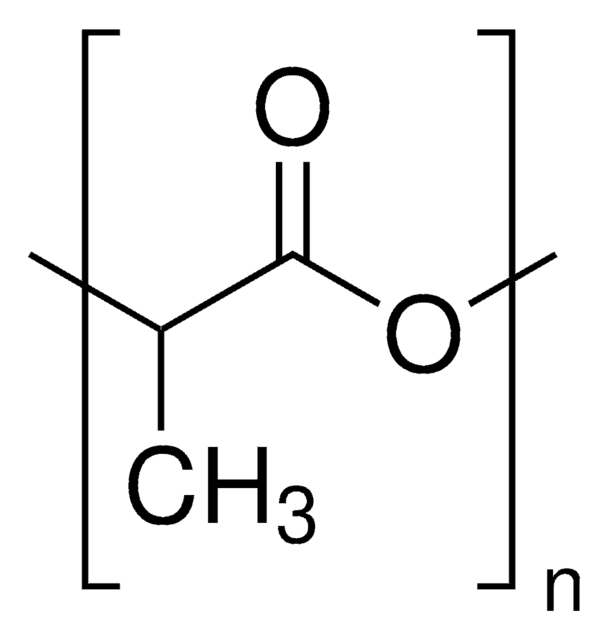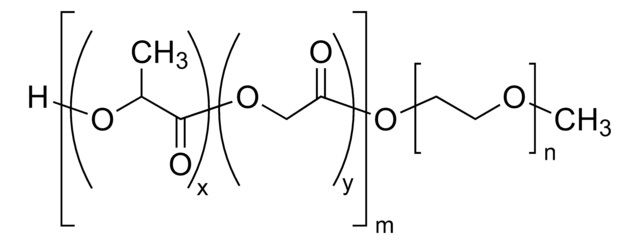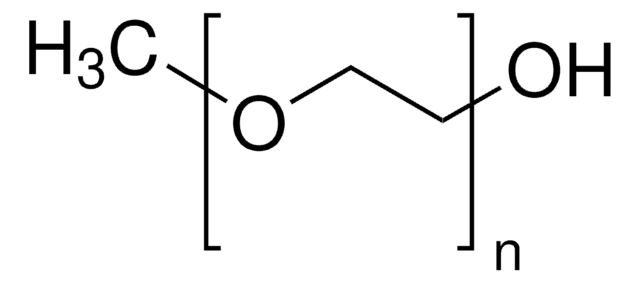おすすめの製品
アプリケーション
Biocompatible, amphiphilic block copolymer composed of a hydrophilic PEG block and a hydrophobic poly(D,L-lactide) (PLA) block. These materials have been used in control release and nanoparticle formulation for drug encapsulation and delivery applications. Well-defined materials with varying properties can be prepared by controlling the relative length of each polymer block. Hydroxyl termination allows for facile further chemical modification of these materials.
保管分類コード
11 - Combustible Solids
WGK
WGK 3
引火点(°F)
Not applicable
引火点(℃)
Not applicable
適用法令
試験研究用途を考慮した関連法令を主に挙げております。化学物質以外については、一部の情報のみ提供しています。 製品を安全かつ合法的に使用することは、使用者の義務です。最新情報により修正される場合があります。WEBの反映には時間を要することがあるため、適宜SDSをご参照ください。
Jan Code
900657-BULK:
900657-VAR:
900657-500MG:
最新バージョンのいずれかを選択してください:
この製品を見ている人はこちらもチェック
Yuan Zhang et al.
Pharmaceutical research, 28(5), 1167-1178 (2011-02-23)
Somatostatin analogue octreotide (OCT)-modified PEG-b-PLA micelles were constructed to bind to somatostatin receptors (SSTRs) overexpressed on tumor cells for enhanced intracellular drug delivery and improved therapeutic efficacy for malignant tumors. Copolymers conjugated with octreotide (OCT-PEG₆₀₀₀-b-PLA₅₀₀₀) were synthesized. The fluorescent probe
Yiguang Wang et al.
Pharmaceutical research, 27(9), 1861-1868 (2010-06-19)
To develop an efficient tumor vasculature-targeted polymeric micelle delivery system for combretastatin A4 (CA4), a novel antivascular agent. CA4-loaded micelles were prepared from poly (ethylene glycol)-b-poly (d, l-lactide) copolymers. RGD peptides that target integrins alphavbeta3 and alphavbeta5, markers of angiogenic
Ho-Chul Shin et al.
Journal of controlled release : official journal of the Controlled Release Society, 140(3), 294-300 (2009-05-05)
Current clinical and preclinical anticancer formulations are limited by their use of toxic excipients and stability issues upon combining different drug formulations. We have found that poly(ethylene glycol)-block-poly(d,l lactic acid) (PEG-b-PLA) micelles can deliver multiple poorly water-soluble drugs at clinically
Zahra Daman et al.
Pharmaceutical research, 32(11), 3756-3767 (2015-08-01)
Resistance to gemcitabine in pancreatic cancer (PC) may account for the failure of conventional treatments. Recently, salinomycin (SAL) has been identified as selective inhibitor of cancer stem cells (CSCs). In our study, we aimed to deliver SAL to gemcitabine-resistant PC
資料
The development of drugs that target specific locations within the human body remains one of the greatest challenges in biomedicine today.
ライフサイエンス、有機合成、材料科学、クロマトグラフィー、分析など、あらゆる分野の研究に経験のあるメンバーがおります。.
製品に関するお問い合わせはこちら(テクニカルサービス)